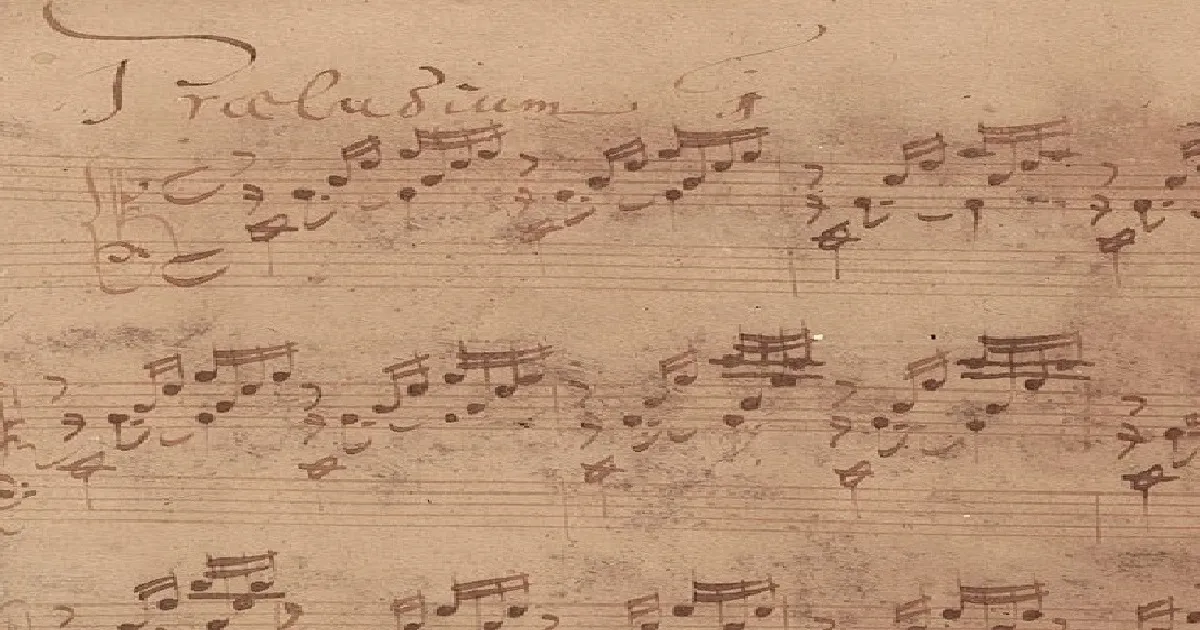In the concluding entry on Chopin’s Étude op.10, no.1, I discus how this piece was influenced by its historical predecessors, and how it in turn influenced future compoers.
Predecessors/Successors
Another angle to consider in the study Chopin’s Étude op.10, no.1 was to search for which pieces might have inspired Chopin, and those that were then inspired by Chopin. Below I’ve collected a few of each. Pictures are included for easy comparison to Chopin’s Étude.

Paganini Caprice No. 1
The inspiration for the op. 10 études is not often attributed to Chopin’s piano teachers, but instead to the violin virtuoso Niccòlo Paganini. In 1829, Chopin attended several of his concerts in Warsaw before leaving for France. Of Paganini’s works that I am aware of, I see the most in common between Chopin’s op. 10 no.1 Étude and Paganini’s first caprice from his own op. 1. While we don’t have any complete programs from Paganini’s Warsaw concerts to verify these were indeed performed,1 it is probable that Chopin was familiar with the caprices.
The first caprice is built off rapid four-note arpeggios which challenge the violinist to master a ricocheting bow-stroke with the right hand. Similarly, Chopin’s Étude uses four-note arpeggios to rocket the right hand up and down the keyboard. Despite the fact they were written for different instruments, both pieces require study of the right hand in terms of suppleness, balance, and awareness of the thumb and fingers’ mechanics. Paganini can be thanked for lifting many technical limitations of the violin, and many of his caprices inspired pianists like Liszt, Schumann, Brahms, Rachmaninov, and others to create their own concert études after them.
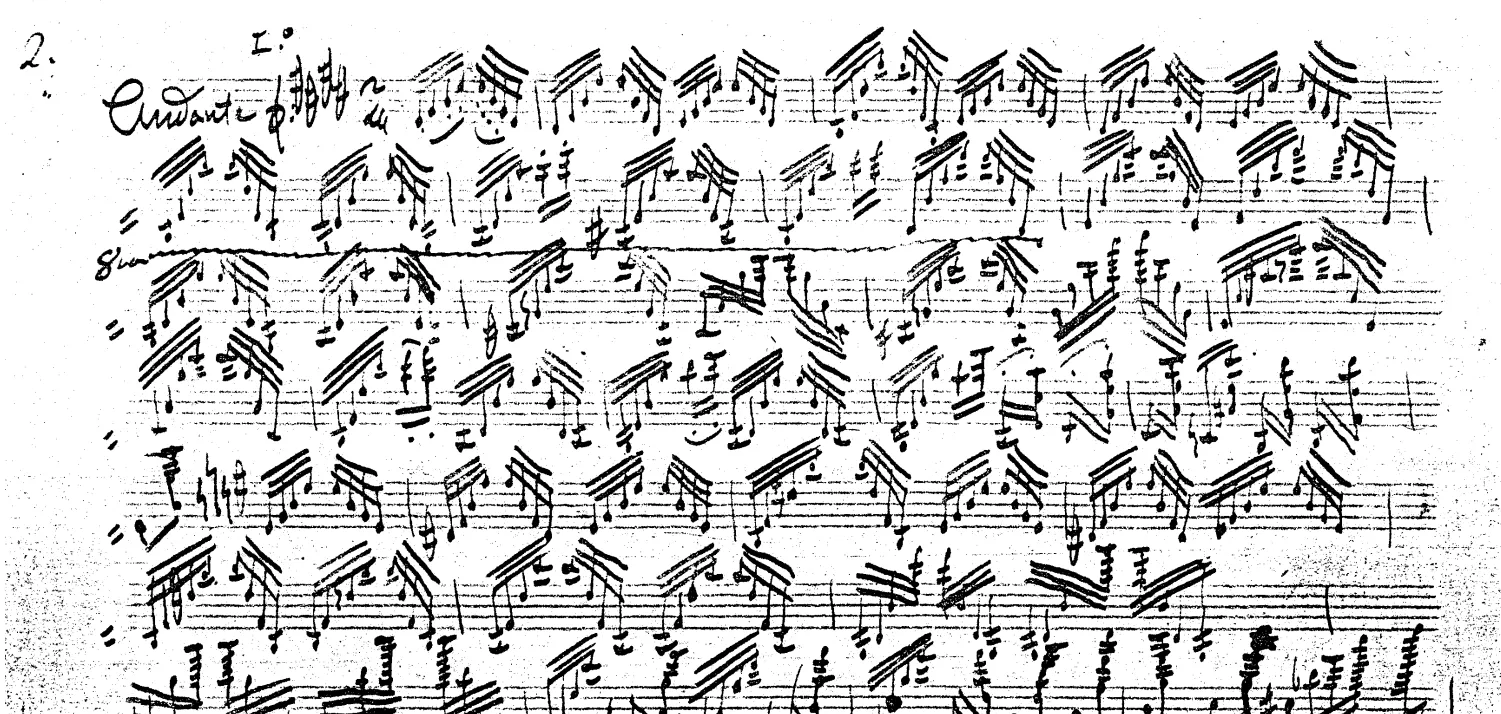 Manscript copy of Paganini’s Caprice op.1 no.1
Manscript copy of Paganini’s Caprice op.1 no.1
Bach’s C Major Prelude
Many musicologists have commented on the idea that Bach’s C Major Prelude from the first book of The Well-Tempered Clavier resembles the op.10, no.1 étude. There are many points of similarity: both pieces in C major begin a large musical journey over two volumes, both have a similar harmonic flow by using extended arpeggios over a bassline, and both end with extended pedal points over the dominant and tonic chords. In Chopin’s personal practice, he held Bach’s music in the highest regard. In his teaching, he often remarked on the importance of practicing Bach daily.2 After composing the Études op.10 and 25, the only score that Chopin would take to Majorca, where he wrote his own piano préludes, was his copy of Bach’s Well-Tempered Clavier.
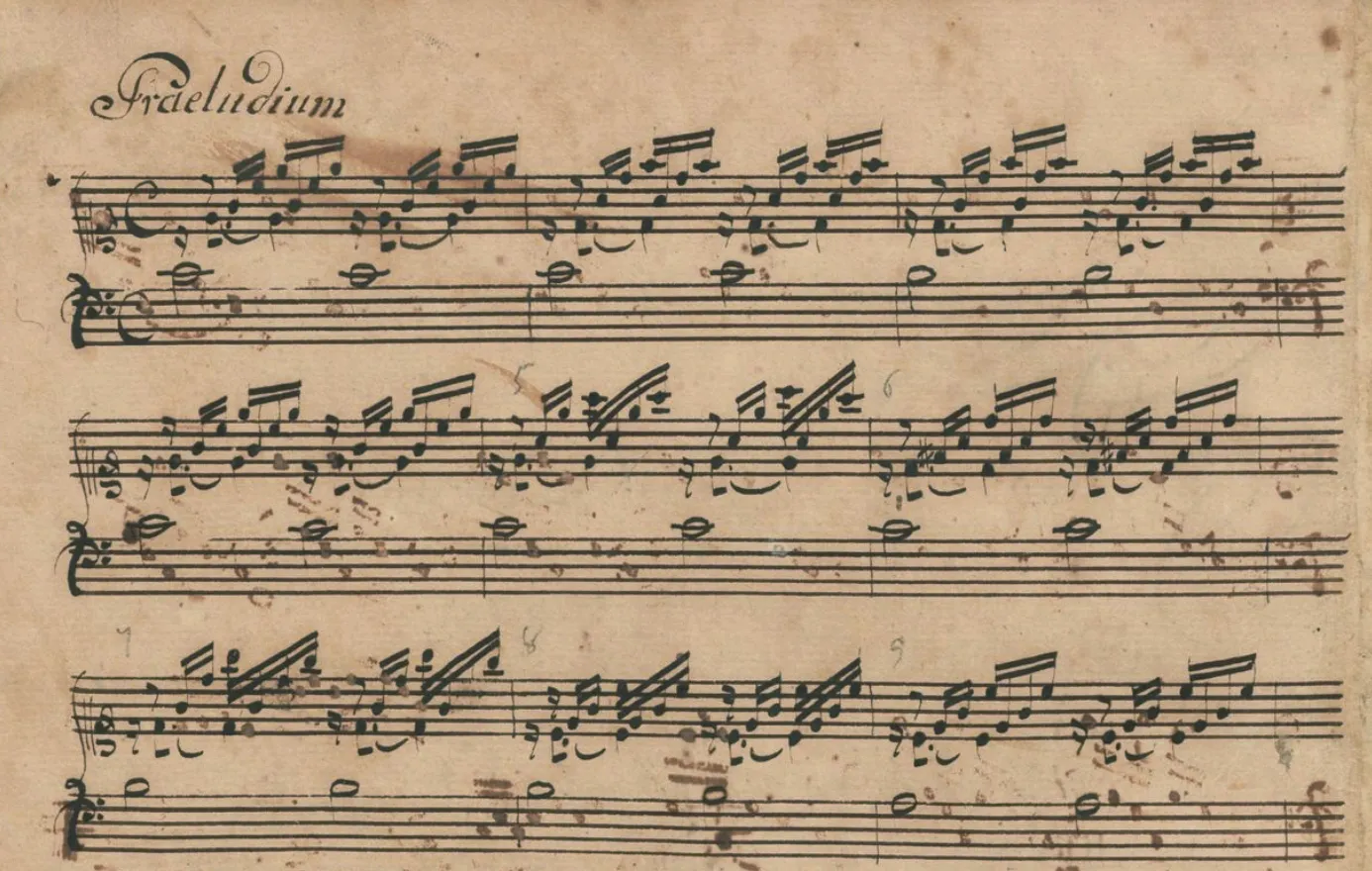 Manuscript of J.S. Bach’s WTC I Prelude in C major
Manuscript of J.S. Bach’s WTC I Prelude in C major
Cramer’s Two Études in D
In terms of technical forerunners to op. 10 no. 1, we can turn to Johann Baptist Cramer, who published his Opus 30 and 40 études in 1804 and 1808, roughly 20 years before Chopin’s. He wrote two études in D major and D minor for single-hand arpeggio practice, and the right-hand arpeggiations with a stepping octave bassline looks remarkably similar to what Chopin would later expand technically.3 We know that Chopin also respected Cramer as a pianist greatly, and even assigned many of Cramer’s études to his students. These two études can be found in the second book of Sixty Selected Studies of Cramer’s études, numbers 19 and 20, edited by Bülow.
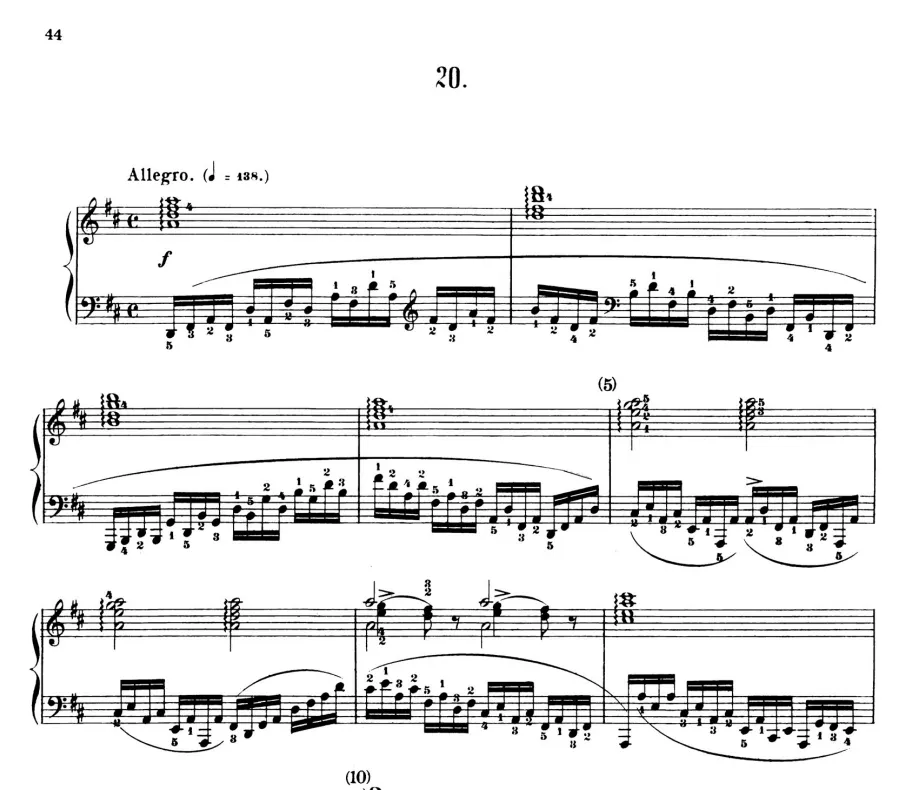
 Cramer’s Matching etudes for the left and right hands
Cramer’s Matching etudes for the left and right hands
Godowsky’s Studies on Chopin Études
As for pieces that are inspired by the Chopin études, Leopold Godowsky’s studies on Chopin’s études should be mentioned. Composed between 1894 and 1914, there are two versions for the op.10, no. 1. Both versions involve the left hand more in performance than the original. The first version uses the left hand with the right to create great and cavernous arpeggios in contrary motion, and the second uses only the left hand to play both arpeggios and weave Godowsky’s characteristic and delicate chromatic webs. Godowsky defended his treatment of the left hand in the preface of his Studies on the Chopin Études for the left hand: “If it is possible to assign to the left hand alone the work done usually by both hands simultaneously, what vistas are open to future composers, were this attainment extended to both hands.”4
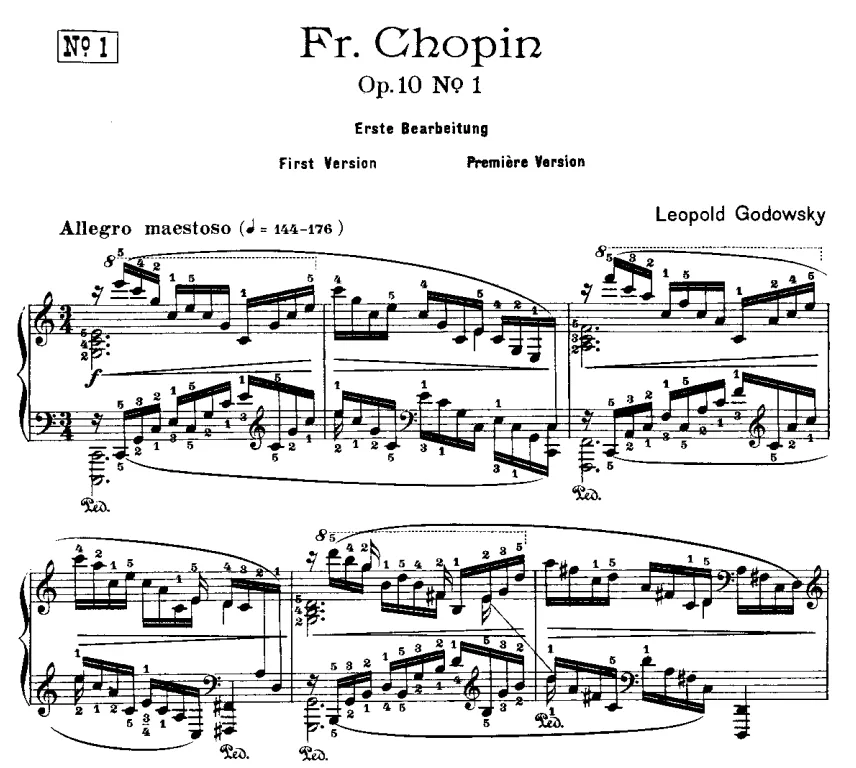
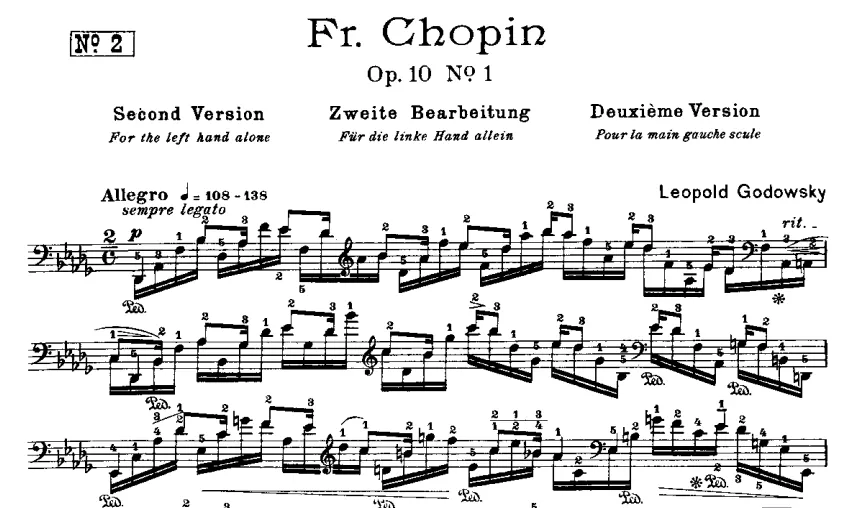 Godowsky’s Studies on Chopin’s Etudes, first and second versions.
Godowsky’s Studies on Chopin’s Etudes, first and second versions.
Busoni’s Prélude et Étude en Arpèges
Another piece that I think it is safe to say was inspired by Chopin’s Études is The Prélude et Étude en Arpèges, written in 1923. The piece is Busoni’s contribution to the École des Arpèges, a method book written by his friend Isidore Philipp, a piano teacher at the Paris Conservatoire. The Prélude of this work features bitonal arpeggios, left hand tremolandi, and a toccata-like coda concludes the piece. The opening of the étude, in the key of C minor, looks and sounds like Chopin’s étude, with fast arpeggios with unusual finger crossings arcing over a baseline. Eventually the piece concludes with a cascade of chords in both hands.

Busoni’s Prelude and Étude en Arpèges
For me, each of these pieces show how the technical and musical ideas that Chopin brought to the table were internalized by other composers and brought forth anew in their own compositions. They confirm the fact that there are no new and completely original ideas, there is only building off the work and using the tools that others have made before us. And similarly, our contributions in the present are part of a chain that will continue after we are gone.
Concluding Thoughts
Personally speaking, the research involved for the creation of this blog was enjoyable. I feel it has strengthened my connection and appreciation with the music, and my awareness of the context in which it was written. It is very humbling how many connections you can craft between just one piece. While I have not yet learned the rest of Chopin’s op. 10, nor the Godowsky, Busoni, Paganini, and Cramer, I would love to get around to doing so one day, and maybe even writing about what I’ve learned since then.
Sources
Footnotes
-
Halina Goldberg, Music in Chopin’s Warsaw (Oxford: Oxford University Press, 2008), 281. ↩
-
For more examples of his admiration for Bach, see Jean-Jacques Eigeldinger, Chopin: Pianist and Teacher as Seen by his Pupils, ed. Roy Howatt, trans. Naomi Shohet, Krysia Osostowicz, and Roy Howat (Cambridge: Cambridge University Press, 1986), 136. ↩
-
Jim Samson, The Music of Chopin (London: Routledge, 1985), 60. ↩
-
Cited in Leopold Godowsky, “Piano Music for the Left Hand,” The Musical Quarterly 21, No. 3 (1935): 298–300. ↩
